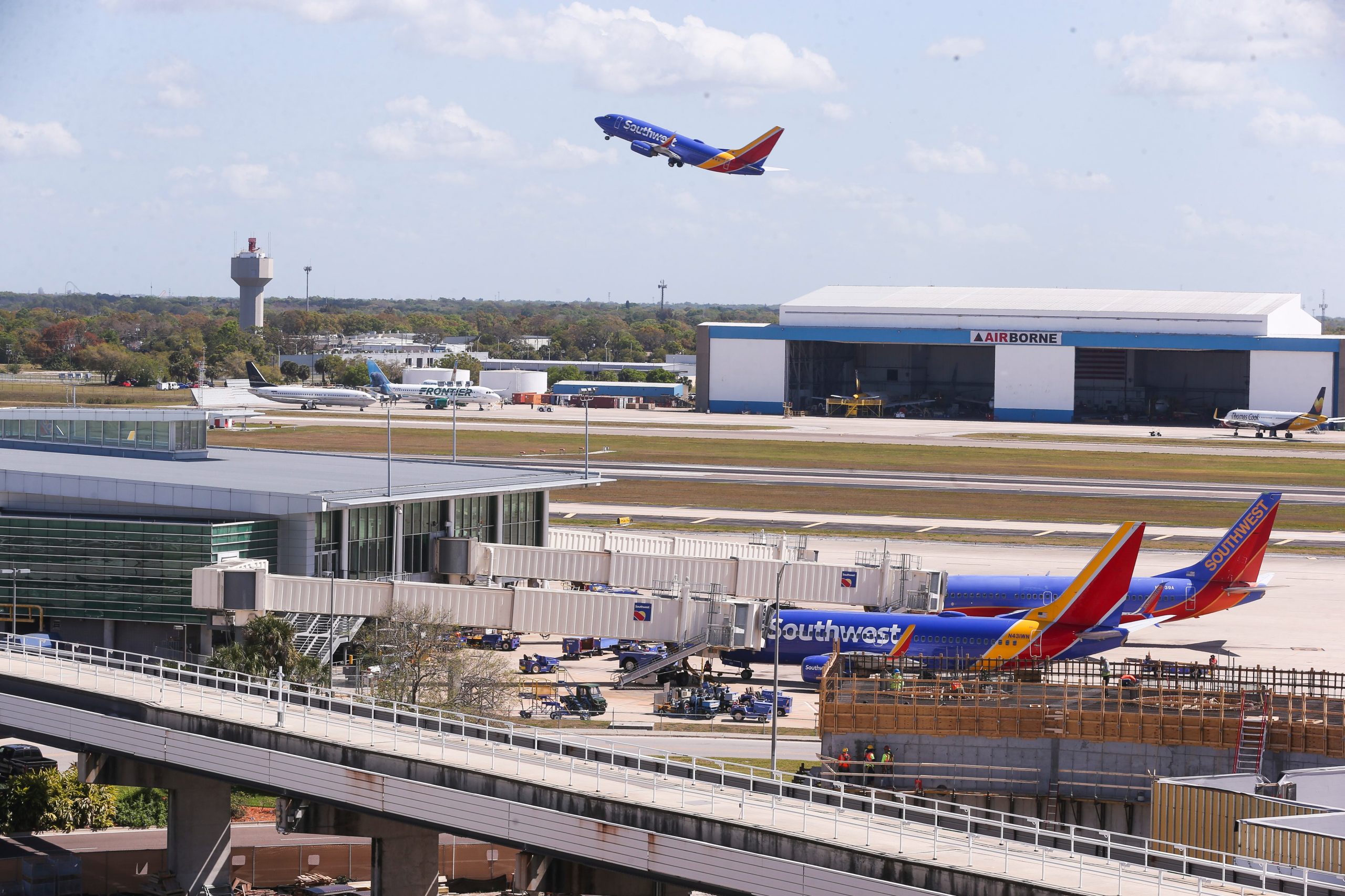A Southwest Airlines flight bound for Tampa International Airport descended rapidly on July 14, plunging more than 1,500 feet in just over a minute and coming within 150 feet of the surface of Tampa Bay.
The incident occurred shortly after 7 p.m., according to public flight tracking data, while the plane was still miles away from its destination. At that point, a Federal Aviation Administration flight chart shows, the plane should have been more than 1,000 feet above the surface.
It instead was flying at about the height of a 15-story building.
The plane â a Boeing 737 MAX â plunged through stormy weather, with light rain and gusts of up to 20 mph, according to a weather station at Tampa International Airport. The conditions were so poor that the flight, which had taken off from Columbus, Ohio, was rerouted to Fort Lauderdale.
An air traffic control operator alerted the pilots to the planeâs low altitude, according to a recording of the communications uploaded to YouTube. At that point, the aircraft quickly ascended about 1,000 feet.
Robert Katz, a veteran commercial pilot, said that while flying that close to the surface, wind shear â a rapid change in the speed or direction of the wind â could have âswatted the airplane like a fly into Tampa Bay.â
Katz, a certified flight instructor in Texas, said the pilots did not appear to be monitoring the planeâs descent. He said the pilots should have been aware they were flying at a dangerous height without the controller alerting them.
âThis should not have happened,â Katz said. âThese pilots are going to have a lot of explaining to do.â
He added that if conditions were poor enough to require the plane be rerouted, that decision should have been made long before the flight reached that point in its descent.
The FAA said in a statement that the incident is under investigation. A Tampa International Airport spokesperson declined to comment, referring instead to Southwest.
âSouthwest is following its robust Safety Management System and is in contact with the Federal Aviation Administration to understand and address any irregularities,â Southwest said in a statement. âNothing is more important to Southwest than the safety of our customers and employees.â
Ben Schlappig, who drew attention to the rapid descent on his flight blog One Mile at a Time, wrote Monday that the incident was a ânear catastrophe.â He speculated that the pilots may have misidentified the Courtney Campbell Causeway â a long, straight stretch of road â as a runway, and descended with the intent to land.
Katz said that was a possibility â but only if the pilots were extremely fatigued. He said incidents like this typically occur when pilots are inattentive due to stress or fatigue, which can be made worse by poor weather conditions.
âThere are plenty of indications inside the cockpit that the airplane is getting too low,â Katz said. âLots of checks and balances in place to get somebodyâs attention to say, you know, wake up, do something.â
Keep up with Tampa Bayâs top headlines
Subscribe to our free DayStarter newsletter
Weâll deliver the latest news and information you need to know every morning.
Youâre all signed up!
Want more of our free, weekly newsletters in your inbox? Letâs get started.
The flight followed a similar incident last month in Oklahoma City in which a Southwest jet flew at an unusually low altitude while still miles from the airport.
In April, a Southwest flight went into a dive off the coast of Hawaii and came within 400 feet of the ocean before the plane began to climb.
The National Transportation Safety Board is also investigating a Southwest jet that did an unusual âDutch rollâ and was discovered to have damage to its tail after a flight from Phoenix to Oakland, California. Investigators say the plane had been parked outside during a severe storm.
Times Staff writers Lesley Cosme Torres and Shauna Muckle contributed to this report.
#FAA #investigates #Tampabound #Southwest #flight #plunged #feet #water,
#FAA #investigates #Tampabound #Southwest #flight #plunged #feet #water
